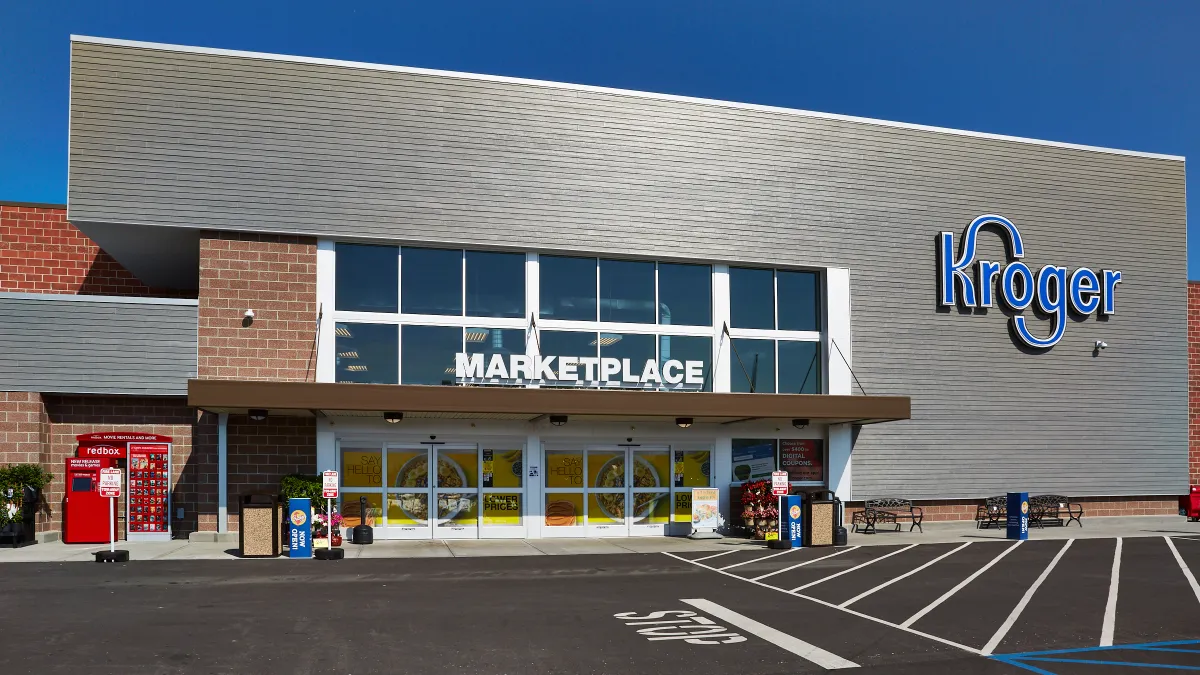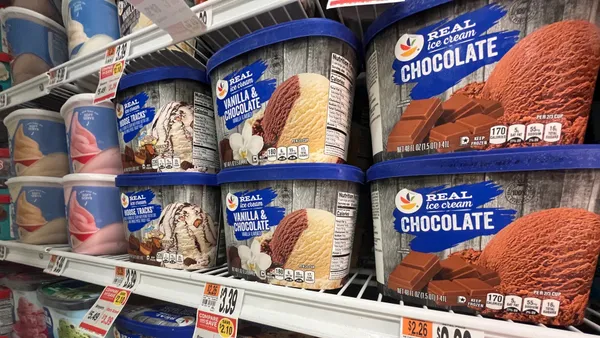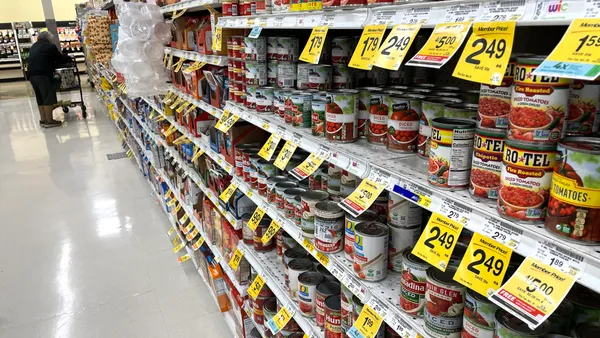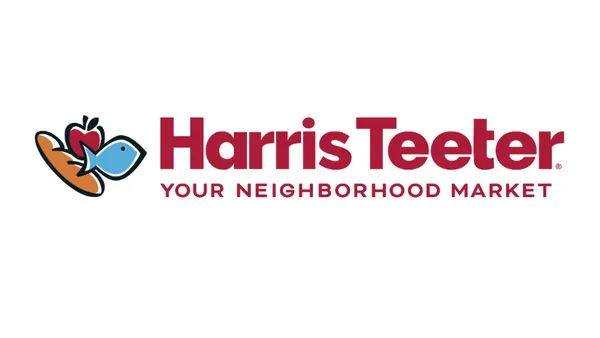Dive Brief:
- Kroger is phasing out its printed weekly ad circulars in markets across the country and switching over to a digital format, according to local news reports and social media posts.
- Local news reports and social media posts displaying customer notifications in recent print circulars note that stores in Michigan, Indianapolis, Mississippi and Portland, Oregon will cease delivering printed weekly ads to homes in late May. However, physical copies will still be available in-store.
- Kroger told local news outlets that the move is a way for the company to cut costs amid declining newspaper subscriptions. It also comes as more and more shoppers are adopting digital shopping.
Dive Insight:
It’s unclear what the exact timetable is for Kroger’s print-to-digital switch for its circular, or how widespread it is. The grocer did not respond to Grocery Dive’s request for more details.
A company representative told The Commercial Dispatch in Columbus, Mississippi, in February that the decision to discontinue printed circulars with that publication on May 24 is a cost-cutting measure informed by the company’s data.
“Kroger has been conducting research for over two years to better understand the changing media consumption habits of our customers, the contribution to sales provided by the printed weekly circular and negative impact to our distribution costs driven by increasing labor and fuel costs,” the grocer told the paper.
In its notification to shoppers, Kroger includes a QR code they can scan to find deals and encourages shoppers to create a digital profile. The notice also ensures customers that they can still access the circular’s deals through the store’s app as well as customize their preferences to create a more personalized shopping experience.
In addition to offering print circulars in stores, Kroger also offers a consumer hotline that shoppers can call if they want to receive copies at home, a spokesperson told The Detroit Free Press.
“I think it’s known in the industry, typically, direct cost to producing a flyer normally represents 50% of the total marketing budget,” Sylvain Perrier, CEO and president of Mercatus, an e-commerce solutions company that works with numerous grocers, said in an interview. “So that’s printing cost, development and distribution with a very difficult to near impossible way to measure the return on the investment.”
Since the pandemic, people have become more comfortable and familiar with QR codes, Perrier noted, driving the switch to digital for many shoppers.
Kroger isn’t the only grocer making the print-to-digital switch with its circulars. Earlier this year, Giant Eagle stopped sending print circulars in the Pittsburgh and Cleveland markets. Earlier this month, however, the company reverted back to print flyers — albeit in a smaller two-page version that includes a QR code for shoppers to scan and learn more about promotions.
Perrier said while print circulars have helped drive customer acquisition in the past, digital circulars are increasingly able to bring new customers to grocers’ stores as well as digital channels.
“If you look at how people are finding Kroger — and this is so normal — it’s typically the name, but it’s also the keywords ‘Kroger Weekly Ad,’” Perrier said, showing data on Kroger in the month of March. “If I look at some of Mercatus’ customers, 50% of the traffic trickles back down into the weekly digital ad.”
Perrier noted that grocers and other retailers will continue to invest in their digital channels and incentivize shoppers online. This is a gradual process, though, and he believes Kroger is smart to keep physical copies of its weekly circular in stores.
“If we can’t get the content in there or the SKUs on the shelf, does it make sense to continue investing in [print flyers]?” he said.













